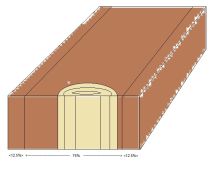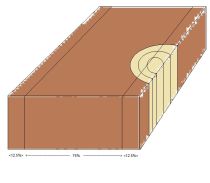Sound Knot: Difference between revisions
Jump to navigation
Jump to search
Peter wood (talk | contribs) No edit summary |
Peter wood (talk | contribs) No edit summary |
||
| Line 1: | Line 1: | ||
<div style="border: 3px double #ccc; float:right; width:15%; background-color:# | <div style="border: 3px double #ccc; float:right; width:15%; background-color:#eaf3f9; padding:10px;text-align: left;"> | ||
<p style="text-align: center;"><u>All Knots</u></p> | <p style="text-align: center;"><u>All Knots</u></p> | ||
*[[Knot]] | |||
*[[Knot Hole]] | *[[Knot Hole]] | ||
*[[Cone Hole]] | *[[Cone Hole]] | ||
Latest revision as of 06:06, 17 April 2023
All Knots
Description
A sound knot is a knot in lumber that is solid and firmly fixed in place, and does not fall out or affect the strength or durability of the surrounding wood. It is a natural occurrence caused by a branch that has been fully encased by the growth of the tree's trunk, creating a tightly knit, dense portion of wood.
Australian Grading Standards
When grading wood in Australia, a sound knot can be classified as sound even when there is partial encasement as long as the partial encasement does not exceed 50% of the knot.
|
The maximum KAR for a Face Knot is 50% the width of the timber. |
|
The maximum KAR for an other Knot is 30% the width of the timber. |
.


